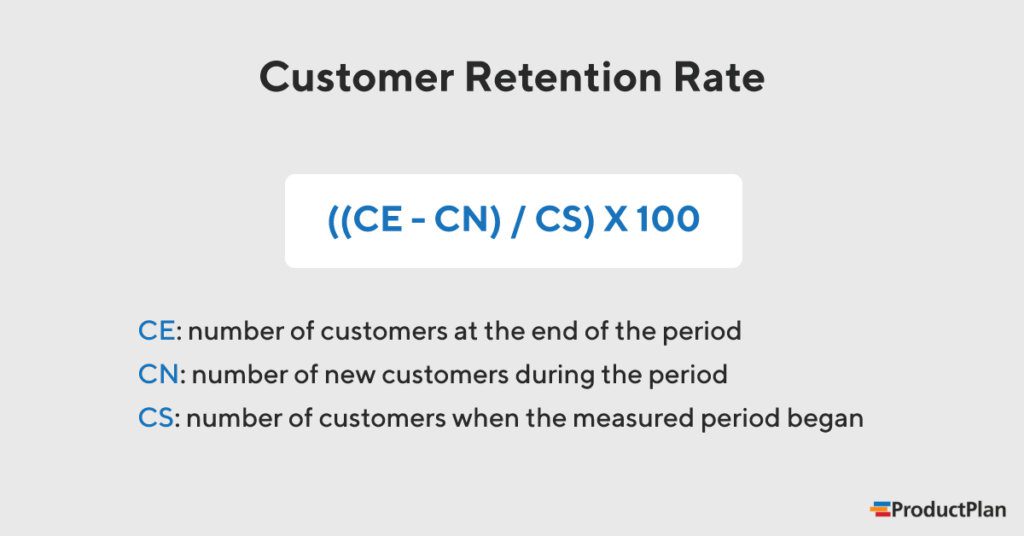What Does Retention Rate Mean?
In marketing and product management, retention rate refers to the percentage of customers who continue paying for a product over a given timeframe. This is a critical success metric for subscription-based businesses, such as SaaS software providers, and companies whose customers repeatedly buy the same products from them, such as milk and coffee brands.
For businesses that sell products to customers only once over a long period—car or refrigerator manufacturers, for example—retention rate is a less relevant success metric. But suppose these companies also sell an ongoing service to support their products, such as a warranty or maintenance agreement. In that case, the retention rate can be an essential metric to gauge success in selling these add-on sales.
Why Is a High Customer Retention Rate So Important?
Many entrepreneurs and business analysts believe customer retention is the most crucial metric to determine a company’s success. Here are several reasons.
It leads to outsize profits.
According to research by Bain & Company, a 5% increase in customer retention generates more than a 25% boost in profit. One reason for this is that customers who continue using your product over a long period are more likely to trust and think highly of your company. It makes them viable candidates to buy other products you make.
It tells you whether or not your product is continuing to solve your customers’ problems.
If a company implements costly marketing, advertising, and sales campaigns to support the launch of its new product, those efforts might generate a short-term spike in sales and revenue. But the company will not know that its product is continually providing value to users unless they continue using it. Over the long term, retention rate represents one of the best ways to measure how well a product solves problems and adds value for its target personas.
It’s far more cost-effective than acquiring new customers.
Existing customers don’t require costly marketing and advertising campaigns to continue earning their business. They need a product that continues to add value to their jobs, companies, or lives. This explains the research cited in a Forbes article that it can cost a business five times more to attract and earn a new customer than retain an existing customer.
How Do You Calculate Retention Rate?
To calculate customer retention rate over a given period—one year is typical—you will need three data pieces:
1. The number of customers you had at the beginning of the measurement period.
2. The number of new customers who signed up for your product during the period.
3. The number of customers you had at the end of the period.
The formula works as follows:

A customer retention rate example
Imagine you’ve been selling a SaaS software product, billed monthly, for a few years. You want to determine your customer retention rate for the previous calendar year. After reviewing your customer data, you find:
- You had 521 existing customers as of January 1.
- You captured 66 new customers between January 1 and December 31.
- As of December 31, you had 490 customers.
Plugging these numbers into the formula above, you derive the following number:
490 – 66 / 521 = 81.3%
Your customer retention rate is 81%, which most industries agree is a good rate.
Related Terms
churn / monthly recurring revenue (MRR) / customer acquisition cost (CAC) / key performance indicator (KPI)/ product-market fit
Learn More Ways to Measure Your Product’s Performance. Read our book: The Product Success Metrics